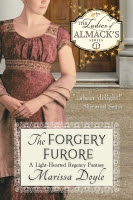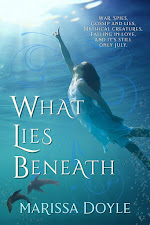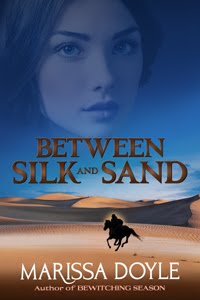 I must admit—I debated whether to include Lady Caroline Lamb as one of our nineteenth century heroines. Sure, she was a real lady who lived in the early nineteenth century in England. She was in her teens when she started her meteoric rise to infamy. But most of our nineteenth century heroines were women we could admire. I find that harder to say of dear, passionate Caro.
I must admit—I debated whether to include Lady Caroline Lamb as one of our nineteenth century heroines. Sure, she was a real lady who lived in the early nineteenth century in England. She was in her teens when she started her meteoric rise to infamy. But most of our nineteenth century heroines were women we could admire. I find that harder to say of dear, passionate Caro.It was Caro who called the poet Lord Byron “mad, bad, and dangerous to know,” but perhaps that’s because it takes one to know one. She was born Caroline Ponsonby, the only daughter of the Earl of Bessborough, and spent much of her youth at Devonshire House, being the niece of Georgiana, Duchess of Devonshire. She had a governess, then attended a finishing school in London. According to some sources, she spoke French, Italian, Greek, and Latin and dabbled in prose, poetry, and painting. In 1805, at just nineteen, she made what was considered an excellent match, marrying a rising political star, William Lamb, who would someday become Lord Melbourne and one of Queen Victoria’s closest advisors.
But Caro’s life was far more turbulent. She may well have been a bit mad. She simply couldn’t settle into being wife and mother, though that’s what everyone expected of her. She cut her hair into short curls (the first “pageboy”), dressed in boys’ clothes, and traipsed about London by night. When she did appear as a lady at balls and such, she invariably did something to draw attention to herself, like leaping over couches to reach the people she liked faster.
Or staring at gentlemen poets.
That’s one of the stories on how she and Lord Byron met. He was introduced to her by a delighted hostess at a ball, and Caro stared him down, then gave him the Cut Direct by turning her back on him without a word. A man used to having women fawn over him, he was immediately determined to pursue her.
 But in the end, it was Caro who pursued him, and quite scandalously too. She truly was a bad girl. One account calls it the first celebrity stalking. For six months, he was the center of her world. She wrote him passionate letters. If he had been invited to a ball and she hadn’t, she’d stand outside until someone let her in too. She’d use her pageboy disguise to show up at his rooms and demand entrance. Byron was a man who lived large, but Caro was too much even for him. He was relieved when her husband took her to Ireland for a few months to cool off. When she returned to London, the poet made it clear their affair was over.
But in the end, it was Caro who pursued him, and quite scandalously too. She truly was a bad girl. One account calls it the first celebrity stalking. For six months, he was the center of her world. She wrote him passionate letters. If he had been invited to a ball and she hadn’t, she’d stand outside until someone let her in too. She’d use her pageboy disguise to show up at his rooms and demand entrance. Byron was a man who lived large, but Caro was too much even for him. He was relieved when her husband took her to Ireland for a few months to cool off. When she returned to London, the poet made it clear their affair was over.Caro rejected was Caro the most dangerous. Exiled for a time to the country, she made the village girls dress in white and dance around a fire while she burnt Byron in effigy. But that wasn’t enough to still her furies. If Byron could write epic poems, she could write a novel. And she did. Glenarvon, published in 1816, was a thinly disguised story of her life and lampooned a number of Society notables. Lady Jersey, one of the patronesses of the famous Almack’s, immediately rescinded Caro’s vouchers, and the rest of Society followed in turning its back on her. Only her family stayed loyal. Though she published other novels and poetry, she remained on the edges of Society until she died, in her early 40s.
So, what do you think? Should Caro be admired for being fiercely independent, for daring to flaunt Society’s rules to pursue her passions, for getting revenge for rejection? Or was she, as I suspect, truly a bit mad, bad, and dangerous to know?





























